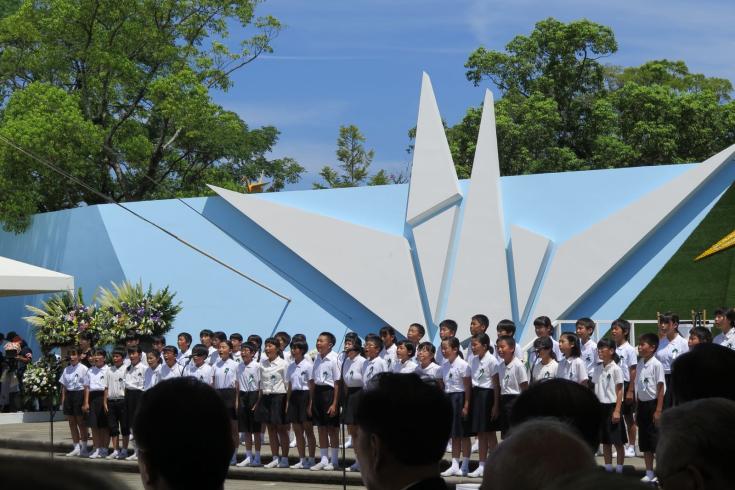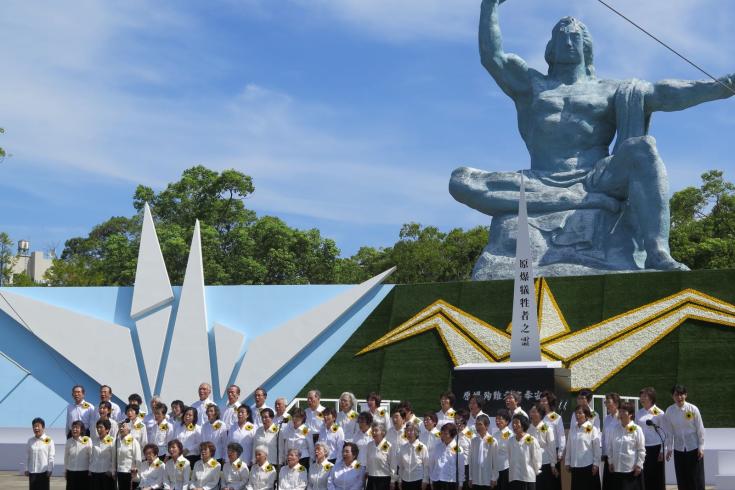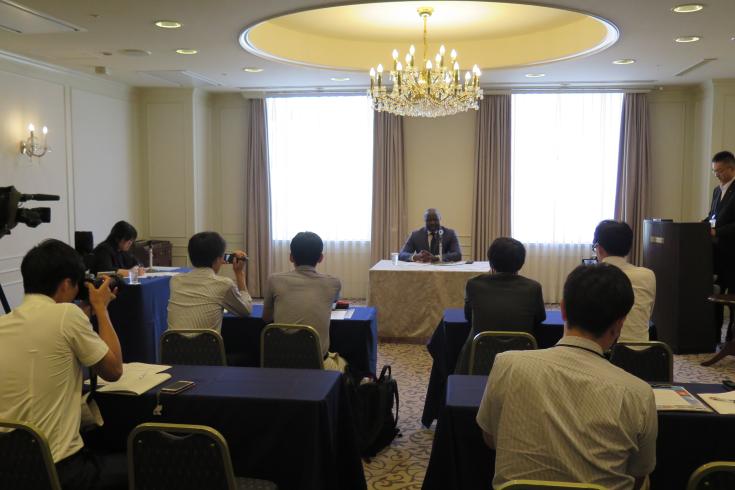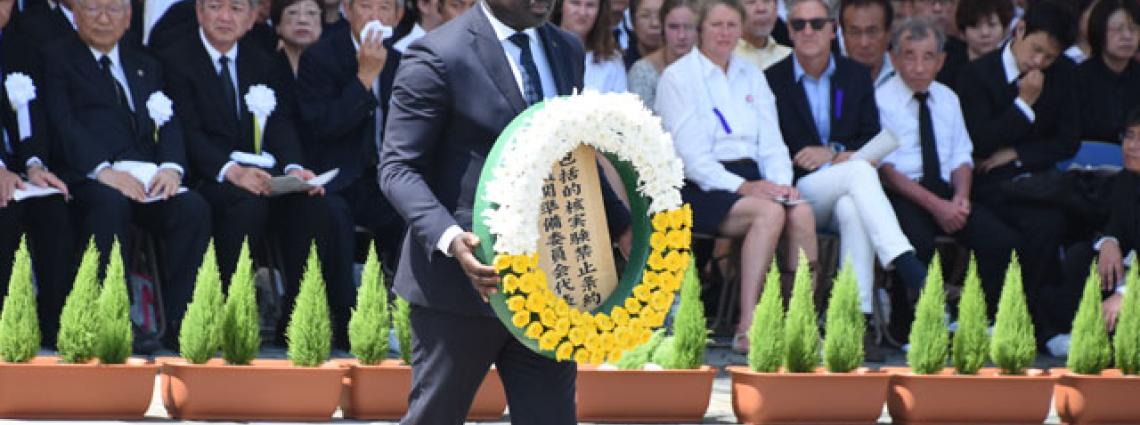CTBTO Executive Secretary honours victims of Hiroshima & Nagasaki bombing
From 8-9 August 2018, CTBTO Executive Secretary Lassina Zerbo visited Japan to commemorate the 73rd anniversary of the Hiroshima and Nagasaki bombings. Zerbo participated in the Nagasaki Peace Memorial Ceremony on 9 August. Alongside United Nations Secretary-General Antonio Guterres, Zerbo laid a wreath during the ceremony as a symbolic gesture of respect for those who were affected by the nuclear bombing, and as a renewal of the CTBTO’s commitment to end nuclear testing.

“The anniversary of the bombings of Hiroshima and Nagasaki is always an important occasion not only to remember those who suffered and continue to suffer, but also to renew the call for the total ban on nuclear testing,”
The ceremony, which takes place every year, commemorates the victims of the nuclear bombing of Nagasaki on 9 August, 1945. On that day a 21-kiloton fission bomb was dropped over Nagasaki, killing an estimated 70,000 individuals. Survivors of the bombing, known as Hibakusha, shared their stories in the hopes that future generations will not forget the suffering that nuclear weapons inflict on their victims. Zerbo acknowledged the courage of these individuals during his visit.
In his remarks, United Nations Secretary General António Guterres, said “the survivors of Nagasaki and Hiroshima, the hibakusha, have become leaders for peace and disarmament here in Japan and around the world. They are defined not by the cities that were destroyed, but by the peaceful world they seek to build.” (Read his full remarks here)
In his remarks, United Nations Secretary General António Guterres, said “the survivors of Nagasaki and Hiroshima, the hibakusha, have become leaders for peace and disarmament here in Japan and around the world. They are defined not by the cities that were destroyed, but by the peaceful world they seek to build.” (Read his full remarks here)

“Here in Nagasaki, I call on all countries to commit to nuclear disarmament and to start making visible progress as a matter of urgency.”
“The Hibakusha will not be with us forever. But we must carry their message in our hearts, for the sake of future generations.”
Media briefing
Speaking to media, the CTBTO Executive Secretary noted the important role that Japan has played in advocating for the Treaty at the “highest political level”. In July this year, Zerbo and Japanese Foreign Minister Taro Kono released a urging for actionable steps leading to the Treaty’s entry-into-force.

CTBTO Head Lassina Zerbo briefs media
“A legally binding ban on nuclear testing is fundamental for a peaceful and more stable world,”
“Verifiability builds trust. In times of uncertainty when distrust is high, the CTBT offers a way to build and restore trust, offering timely, accurate, “bulletproof” data.”
The role of CTBTO for a world free of nuclear testing
The Comprehensive Nuclear-Test-Ban Treaty (CTBT), which opened for signature in 1996, provides the international community with a legally-binding ban on nuclear testing. Its robust technical verification regime provides Member States with timely, accurate data aimed at identifying nuclear explosions. One of the driving forces behind the CTBT, was a conviction that the tragedies of Hiroshima and Nagasaki should not happen again. Ending nuclear testing is the first step towards a world free of nuclear weapons, and the CTBT serves as one of the key legal elements of the non-proliferation and disarmament architecture.
8 Aug 2018
